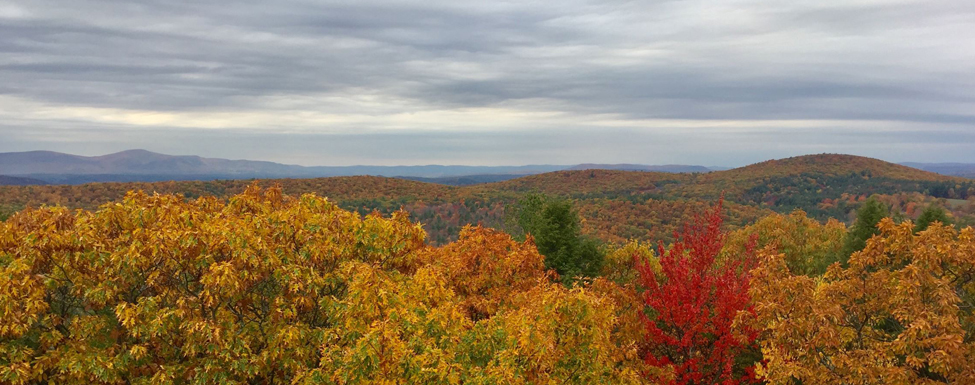New Energy in Norfolk
When Norfolk was new, it benefitted from the largesse of influential citizens who chose to create their own version of a “shining city on a hill,” an enclave of culture and sophistication. These citizens opened their pockets and created beautiful things—a library, a chapel, a gymnasium, a fountain—all flowing from the civic vision of the Robbins-Battell-Stoeckel families.
Norfolk today is equally rich in residents invested in perpetuating the quality of community life, ranging from the members of the Foundation for Norfolk Living, established to create affordable housing, the Norfolk Foundation, dedicated to perpetuating the vitality and sustainability of the town, to the Community Associates who work to maintain the town’s public spaces, to the Norfolk Land Trust which seeks to preserve open space. Energy is sweeping through the town, bringing with it a 21st-century renewal of the 19th-century vision and adapting that vision to the needs of modern America.
“There is an awful lot of energy in town,” said First Selectman Matthew Riiska. “It seems like everyone in town has contributed to some extent. People are noticing.”
And there is a lot to notice. In recent years the town center has been revamped with a new upscale convenience store occupying the 1902 building that once housed a hardware store and the former pharmacy finding new life as The Hub, an office space for both community organizations and private business people. Three private residences have been converted for affordable housing; and City Meadow, a wildlife walk located right in the center village, has been created.
And this is not the end of the story. Riiska said the town is continuing to bubble with activity. An ongoing charrette is held monthly at The Hub—next meeting November 5th—to exchange ideas and to discuss the next steps in development of the village.
“There is a perfect storm of activity,” Riiska said. “People see a need, start talking and the next thing, they are working on it.”
Riiska said the town has been blessed with the same kind of philanthropy that enlivened the town more than a century ago and which gave it a cluster of buildings designed by architects of note.
“A lot of the improvements have been made with local money,” he said. “There is a lot of sentiment about the town and, fortunately, some of our residents have the means to do things. The Foundation has really stepped up to try to make the town as nice as it can.”
In addition to local funding, substantial grants have been obtained to facilitate projects such as the affordable housing initiative and City Meadow. The historic Norfolk Library also received a large grant to pay for an extensive restoration that returned it to the elegant appearance first conceived by architect George Keller and benefactress Isabella Eldridge in 1899.
Riiska said the vision transcends current needs. “Pete Anderson, who is a member of the Norfolk Foundation, says they are not doing it just for the people who are here now but for the people who will live here in the future,” Riiska reported. “We want to encourage more young people to live here.”
Many of the ideas bounced around during charrette sessions concern changes that would make the town more appealing to those younger residents. For instance, it has been observed that Millennials like outdoor activities. Norfolk, with its beautiful, mountainous, terrain, has a number of hiking and biking trails and ways of connecting those trails to the village center are being weighed.
Music has always been a draw in Norfolk with the venerable Yale Summer Music School offering concerts that feature world-class musicians while Infinity Hall, just opposite Yale Summer School on Route 44, stages well-received popular concerts year-round. So successful are the Infinity Hall concerts, it is difficult to find a parking place on most event nights. Riiska said means of providing additional parking are being explored as is changing traffic patterns to both slow vehicles on busy Route 44 and to facilitate traffic entering the highway.
The Yale Summer School, located on the Stoeckel estate on the western side of Route 44, has plenty of onsite parking, but the town is seeking to integrate its activities into the town more. One of the most historic properties in the community, its main structure the White House, was built in 1799 as the home of wealthy merchant Joseph Battell.
It was later owned by his Yale-educated son, philanthropist, composer and art collector Robbins Battell. Battell, in turn, passed it to his daughter, Ellen Battell Stoeckel, who died childless in 1939. She bequeathed the estate to Yale as a center for the arts.
“The Stoeckel estate is a huge part of the town’s center in terms of land mass and its cultural identification,” Riiska said. “We are working with Yale to see how much we can bring them in as a participant in the community. We would like more cross-over—The Yale Summer School is not just about music, it’s art and literature as well.”
He said the town has had several “great conversations” with Yale.
“There is a lot of enthusiasm and so many things going on,” Riiska said. “We have the Farmers Market, the Land Trust’s trail race, next week there will be a talent show at Infinity Hall to benefit the Lions Club—there’s hardly a week without something. And because we are a small town, many of us are involved in more than one organization. It’s a real community effort.”



